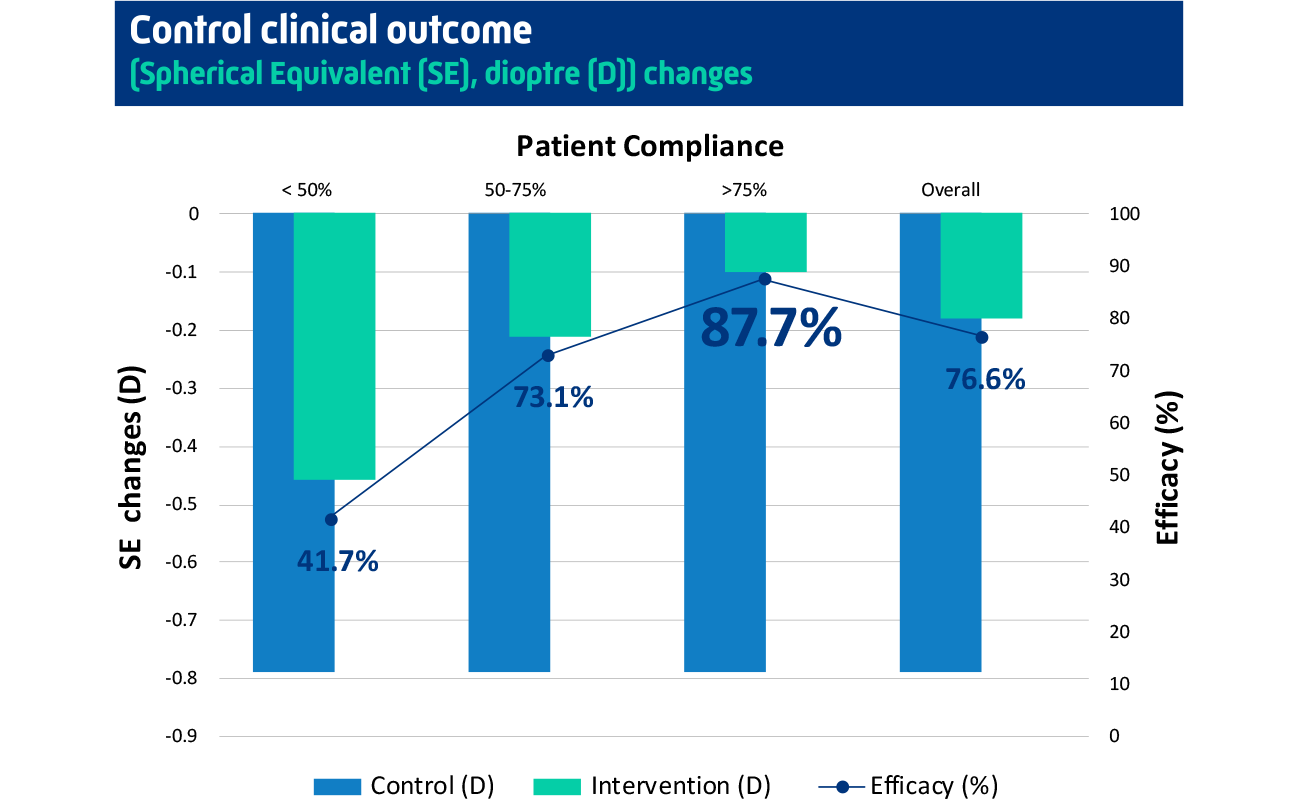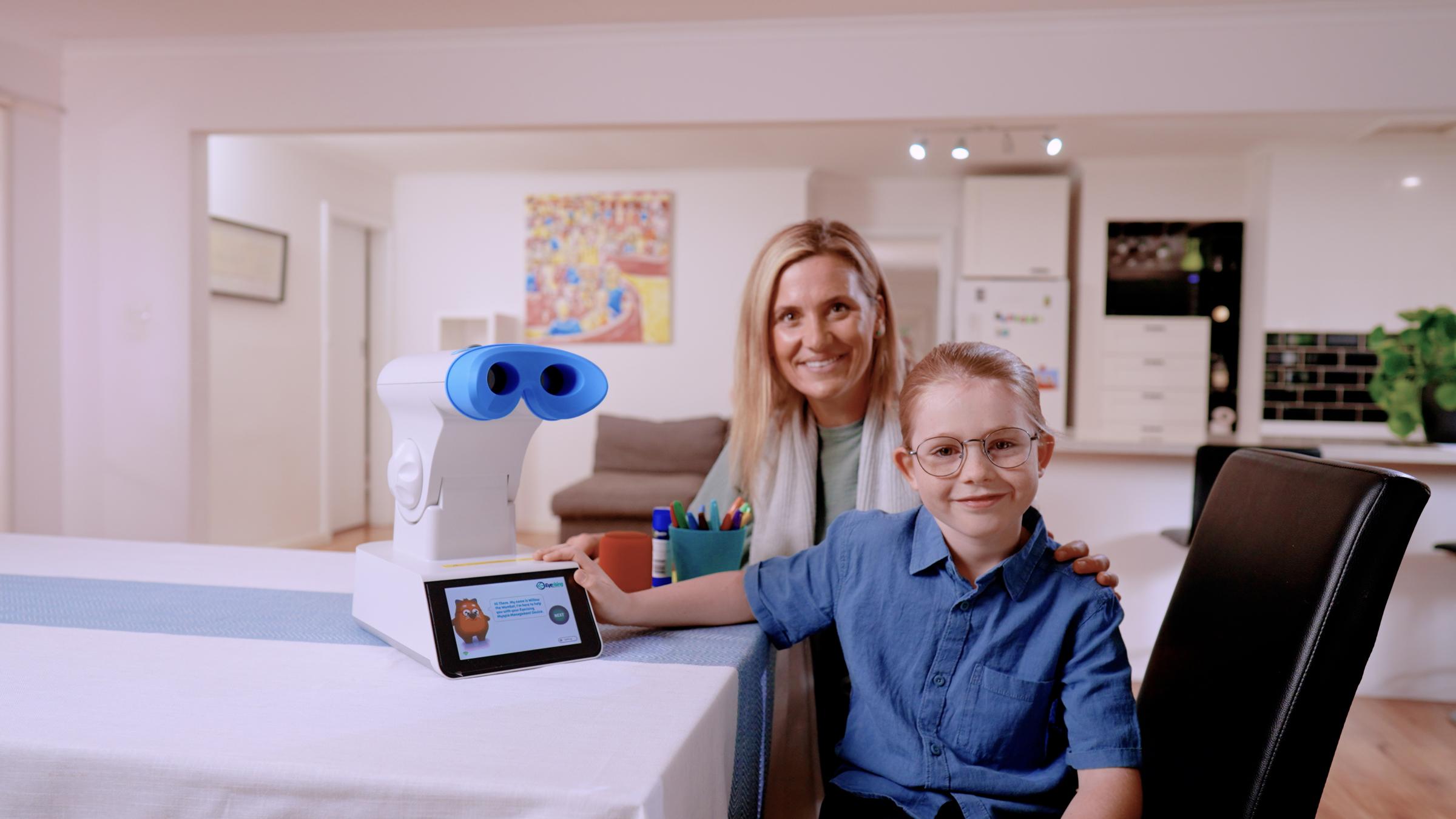Saving sight sooner makes brighter futures.
How it works
In a normal eye, light passes through the eye and focuses at a point at the back of the eye known as the retina.
As myopia progresses, the eye’s length increases, which means that the light entering the eye focuses in front of the retina. Continued lengthening and misalignment leads to high myopia.
The Eyerising Myopia Management Device delivers repeated low-level red-light therapy to the back of the eye, where it stimulates blood flow and thickens the layer of the back of the eye known as the choroid. This helps to slow the eye’s elongation and thereby control myopia progression.
How it works
In a normal eye, light passes through the lens with the focal point correctly reaching the back of the eye, known as the retina.
As myopia progresses, the eye’s axial length increases, which means that the focal point of light entering the eye falls in front of the retina. Continued axial lengthening and further focal point misalignment leads to high myopia.
The Eyerising Myopia Management Device delivers repeated low-level red-light therapy to the back of the eye, where it stimulates blood flow and thickens the layer of the back of the eye known as the choroid. This helps to slow further elongation of the eye’s axial length and thereby control myopia progression.
Clinically proven
An extensive clinical trial program has proven the effectiveness of RLRL therapy and the Eyerising Myopia Management Device for the treatment of myopia. Furthermore, our landmark trial demonstrated that higher treatment compliance leads to higher treatment effect, with up to 87.7% efficacy in controlling myopia where children were >75% compliant with the treatment protocol.
A powerful new addition to your myopia toolkit
As the device is non-invasive and has a wide age range availability, it offers an opportunity to start treatment earlier and in children who are not willing to use or compliant with eye drops or contact lenses. Additionally, there is the option of using RLRL not only as standalone therapy but as adjunct therapy, where it has shown strong efficacy in patients not responding to conventional myopia treatments such as orthokeratology2^.
^RLRL cannot be used in conjunction with atropine. Patients need to stop using atropine for 2 weeks prior to starting RLRL therapy.
With its simple protocol (3 minutes, twice daily, 5 days a week) and ease-of-use via a touchscreen, it can be used by children as young as 3 years of age, who can use the device under parental or guardian supervision.
Furthermore, the device monitors and shares patient compliance data with parents, guardians and medical practitioners for use during follow-up examinations, especially as it has been proven that higher compliance is associated with higher treatment efficacy1, giving both parents and practitioners ease of mind as to the treatment effect.
Easy to use for both parents and practitioners
As the device is non-invasive, it can be used by children as young as 3 years old and up to 16 years old. It is especially appropriate where children are not willing to use or remain complaint with eye drops or contact lenses, but can also be added on as an additional therapy on top of these treatment options to show even stronger effect.
Children are also able to take the device home, where they follow a simple protocol (3 minutes, twice daily, 5 days a week) that can be managed around a school schedule. Children are also able to use the device themselves via a touchscreen, or supervised by parents and guardians (recommended for younger children).
Furthermore, the device monitors and shares patient compliance data with parents, guardians and medical practitioners for use during follow-up appointments, especially as it has been proven that higher compliance is associated with higher treatment efficacy1, giving both parents and practitioners ease of mind as to the treatment effect.
Non-invasive
No drugs
No contact lenses
Achieves up to 87.7% myopia control efficacy7
An extensive clinical trial program has proven the effectiveness of RLRL therapy and the Eyerising Myopia Management Device for the treatment of myopia.
In our landmark trial, our device was shown to achieve up to 87.7% myopia control efficacy when a patient was over 75% compliant to the treatment protocol. Children on RLRL therapy for 1 year had a 76.6% reduction in myopia progression overall compared to those who just wore spectacles. Children who continued RLRL therapy for a second year then had a 75% reduction in myopia progression compared to those who switched to glasses in the second year.
To find out more or to obtain copies of some of our key scientific publications, please visit the Science Hub or contact us on: info@eyerisinginternational.com

Global insights on RLRL
In collaboration with Kate Gifford of Myopia Profile, we completed an interview series with experts from around the world sharing their insights on repeated low-level red-light therapy. Hear about our evolution, ongoing research, patient and practitioner feedback and laser safety in the interviews below:
Frequently asked questions
Prescribing the device
Using the device
References
- https://pubmed.ncbi.nlm.nih.gov/26875007/
- https://retinatoday.com/articles/2019-sept/myopia-a-global-epidemic
- Ruiz-Pomeda A, Pérez-Sánchez B, Valls I, et al. MiSight Assessment Study Spain (MASS). A 2-year randomized clinical trial. Graefes Arch Clin Exp Ophthalmol. 2018;256(5):1011-1021.
- Eyenovia enrolls first patient in phase III CHAPERONE Study for progressive myopia [news release]. New York: Globe Newswire; June 4, 2019. https://www.globenewswire.com/news-release/2019/06/04/1863931/0/en/Eyenovia-Enrolls-First-Patient-in-Phase-III-CHAPERONE-Study-for-Progressive-Myopia.html. Accessed June 25, 2019.
- Lam CSY, Tang WC, Tse DY, et al. Defocus incorporated multiple segments (DIMS) spectacle lenses slow myopia progression: a 2-year randomised clinical trial [published online ahead of print May 29, 2019]. Br J Ophthalmol. doi: 10.1136/bjophthalmol-2018-313739.
- Singapore National Eye Centre, Singapore Eye Research Institute, and Johnson & Johnson Vision set sights on halting global myopia epidemic [news release]. Singapore: PRNewswire; November 12, 2018. https://www.prnewswire.com/news-releases/singapore-national-eye-centre-singapore-eye-research-institute-and-johnson–johnson-vision-set-sights-on-halting-global-myopia-epidemic-300747895.html. Accessed June 25, 2019.
- Jiang, Yu, et al. “Effect of repeated low-level red-light therapy for myopia control in children: a multicenter randomized controlled trial.” Ophthalmology 129.5 (2022): 509-519.





